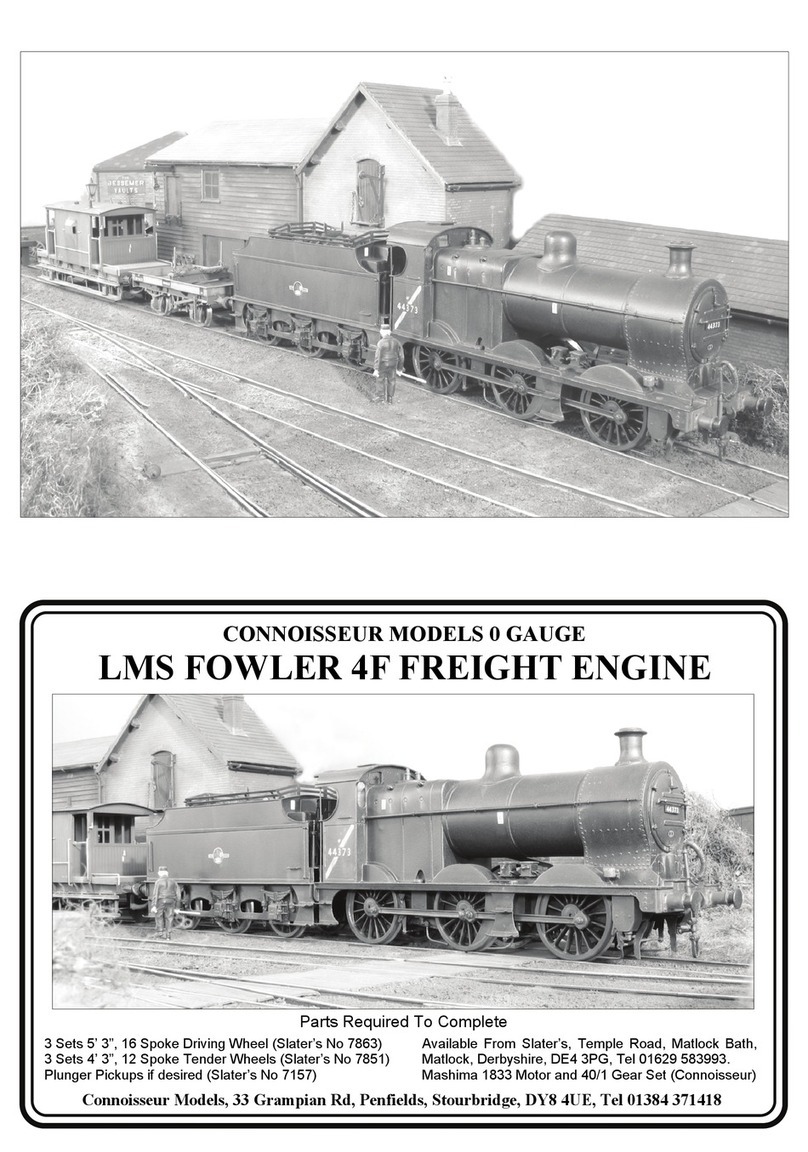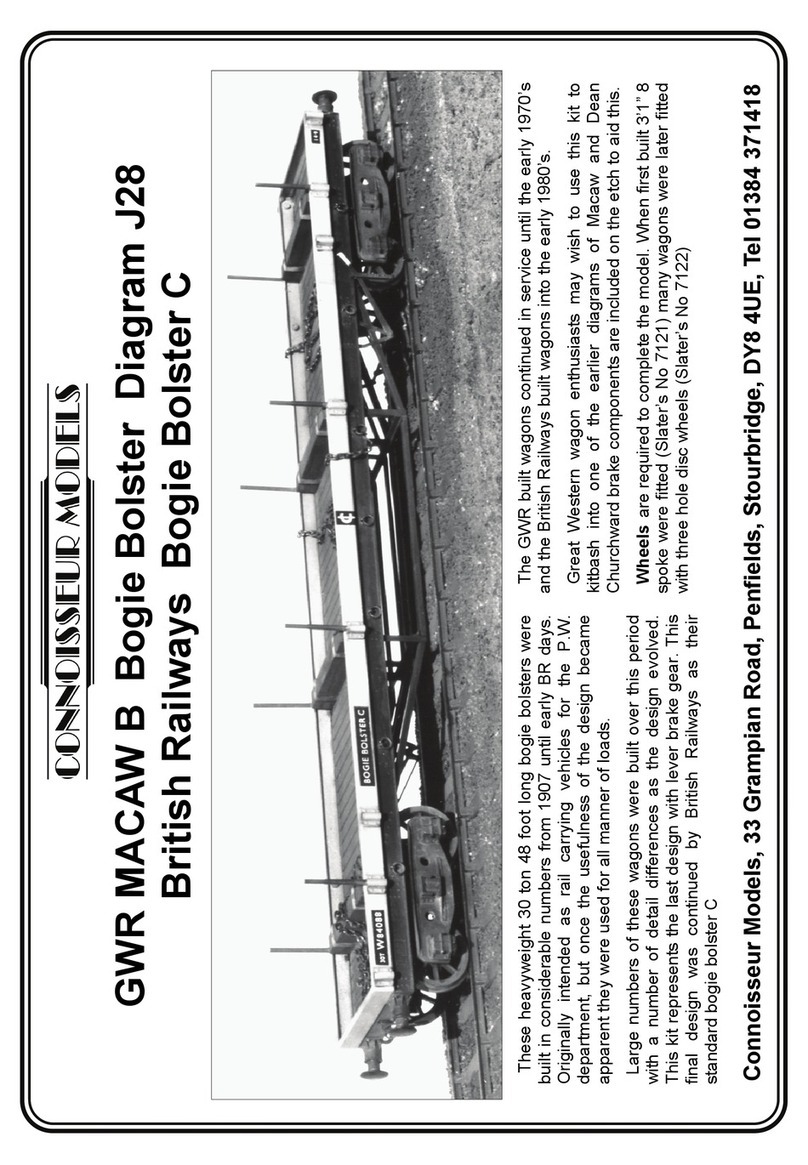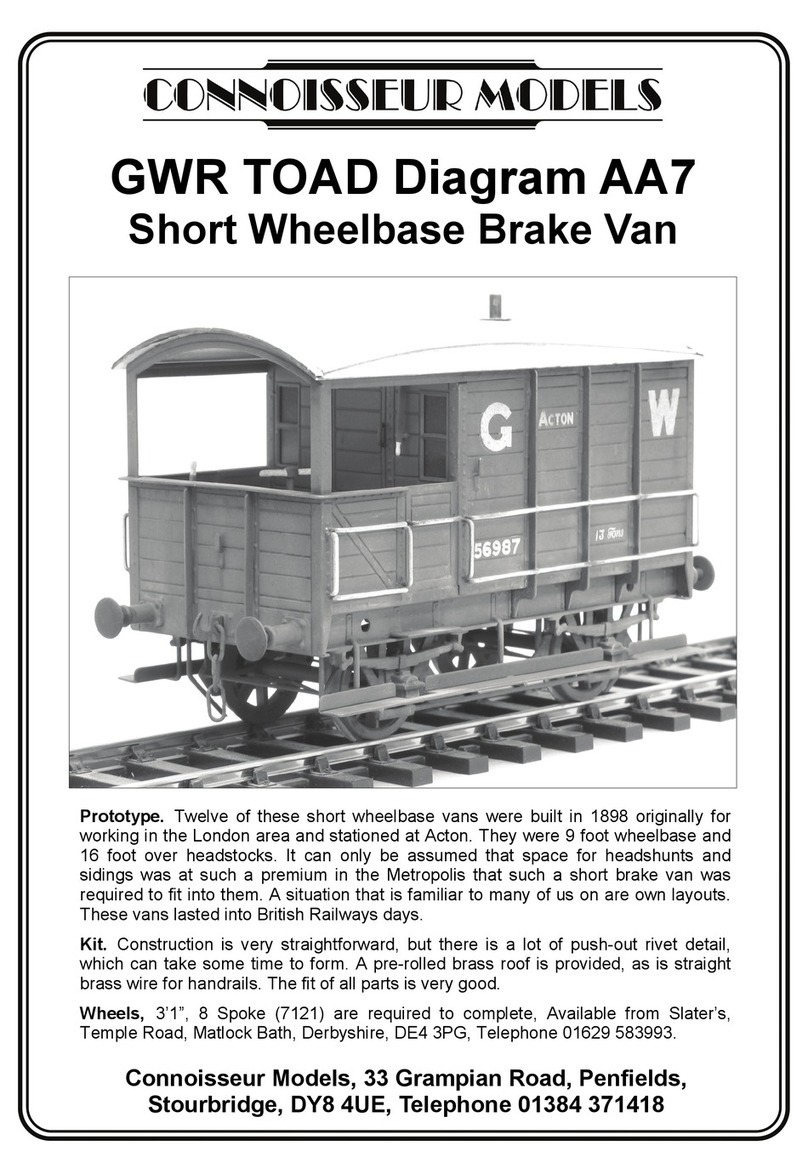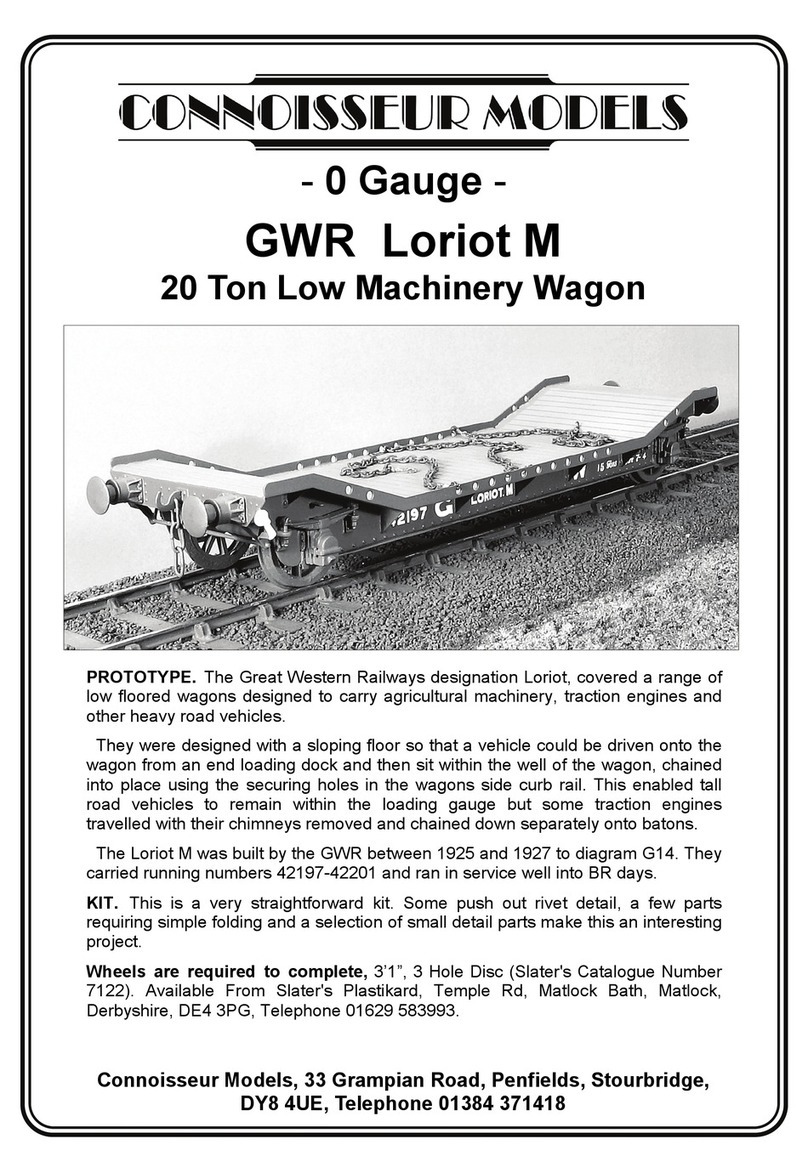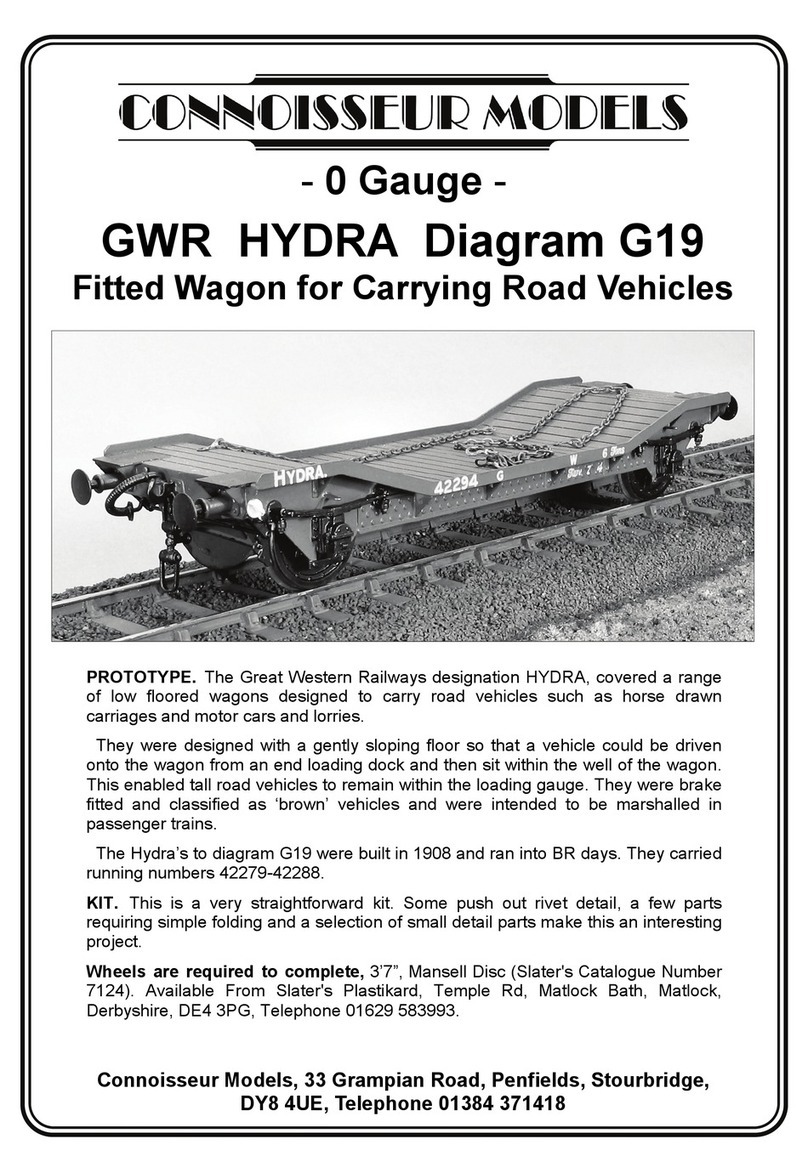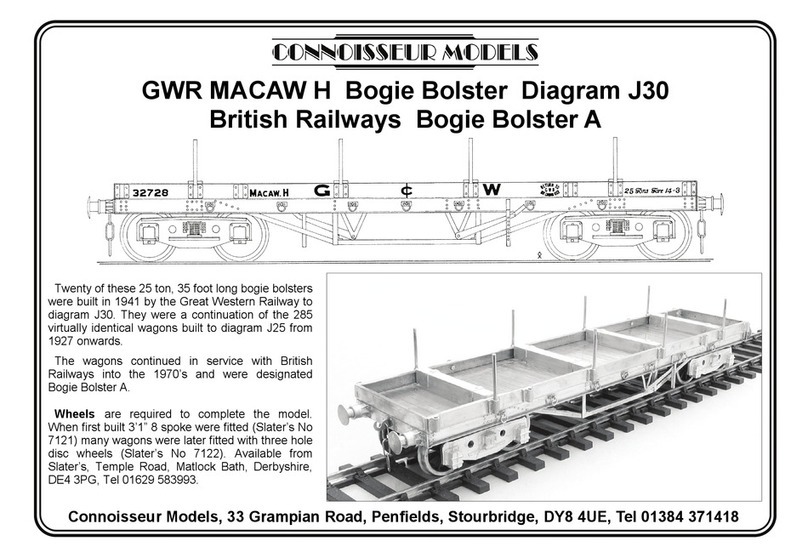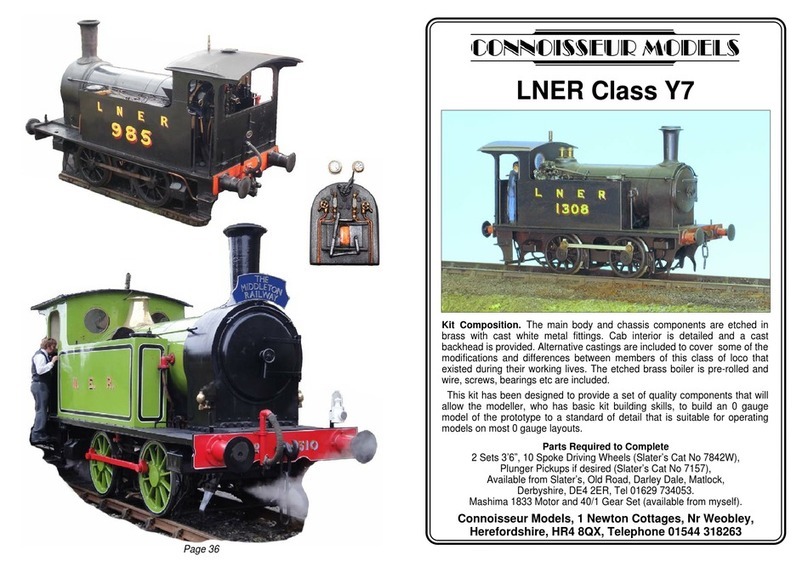SPECIFIC INSTRUCTIONS FOR LOCOMOTIVE KITS
Hole Sizes. Because of the etching process holes will normally be found undersize, for example the
turned brass bearings will not fit holes in chassis sides, and a simple fitting operation is required.
The best tool for opening up holes of this size is a cheap tapered reamer available at most model
railway shows from tool suppliers. By rotating this gently in the hole you quickly open holes to
correct size, without risk of
tearing the metal. By trial and
error on the first hole you will
soon establish how much
material requires removal. For
smaller holes, such as those for
the location of casting's etc
these are best opened up using
a set of cheap tapered
broaches, or by twisting a small
round file in the hole.
Forming Parts. While the boiler
in this kit is pre-formed, other
forming is best achieved as construction progresses as this enables the parts to be adjusted to each
other. To make a tight curve at full metal thickness, such as tank front, bunker rear etc, take a piece
of rod slightly under size of the curve required (a drill shank is ideal). Place roughly on centre line of
bend, holding in place with thumbs and pull upwards with fingers, forming approximately 30 degrees
of the bend. Check with eye and adjust if necessary before forming 60 degree of bend then offer
part to model. Final adjustment of fit is easily made on last stage of bending.
To form shallow curves, splasher tops, smoke box wrappers etc, use a piece of pipe or broom
handle. Diameter is not crucial, a piece of one-inch water pipe covers cab roof to smoke box
wrapper. Place part over tube and hold in place with finger and thumb of one hand. Work the metal
in stages over tube with finger and thumb of the other hand until correct radius is formed.
A technique you may find useful in working metal is to soften and remove the spring from the metal
by heating (called annealing). The part is held with pliers and heated in a gas flame. (The gas
cooker is ideal). Alternatively use a pencil torch that runs off lighter fuel. Heat part until a purple
band appears close to the edges and then remove from heat. Do not overheat part as it will then
become too soft and unworkable. Remember you can reheat if not workable. Allow part to cool
naturally in the air.
Damaged Parts and Shortages. If you damage an etching during construction it is not possible to
replace individual pieces, but I am quite flexible in providing at minimum cost replacement frets (this
will contain all the brass or N/S parts). Where a casting is damaged individual items can be replaced
as I have full control of production. Because of the complexity of the product, combined with the low
volume way it is produced, I try to exercise a high degree of quality control in production and
packing but if you find you are short of an item or find a sub standard part please approach me for a
replacement.
Fibreglass Scratch Brush. The scratch brush is like a propelling pencil holder into which a
fibreglass refill is fitted and which will give a vigorous abrasive action. I find this tool indispensable
for cleaning up and removing solder. One very useful tip is to soak the refills in dilute PVA glue
(Evostick resin W wood glue let down 50/50 with water and a spot of washing up liquid) and then
drill holes in a block of wood and stick the ends of the refills in the holes while they harden off. This
will make the refills much more abrasive and longer lasting and also stops the fibres breaking off
and ending up in your fingers. You will need to give the refill a good rub to get it started but if you
use green label flux you will soon have plenty of rusty tools that need cleaning.
A fibreglass brush and most other general modelling tools can be obtained from Squires Model and
Craft Tools, 100 London Rd, Bognor Regis, West Sussex, PO21 1DD, Tel 01243 842424. They do a
free catalogue and a very good mail order service.
TR0005 Micro Drill Reamer 1mm-5mm
BRC250 6 Piece Cutting Broach Set 0.7-2mm
BRC300 12 Piece Cutting Broach Set 0.65-4mm
TR0010 Tapered
Reamer 3mm-12mm
Three very useful tools purchased from SQUIRES,
100 London Road, Bognor Regis, West Sussex,
PO21 1DD, Telephone 01243 842424.
Page 4
